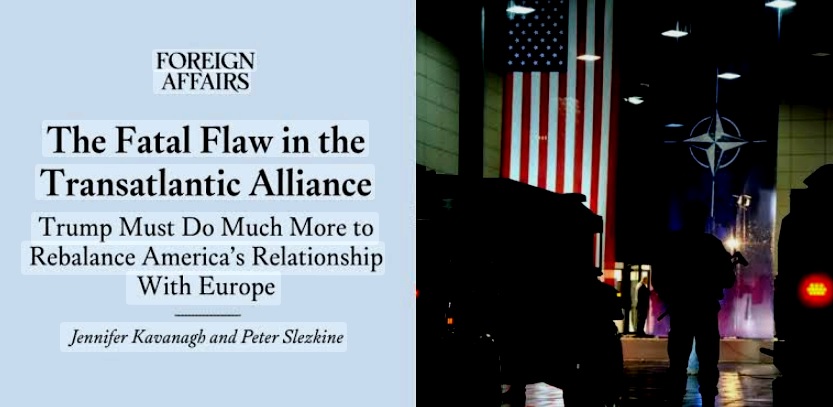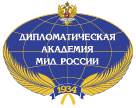
When U.S. President Donald Trump returned to the White House, he had his sights set on rebalancing the transatlantic relationship. He would be right to do so. The United States’ burden in NATO is out of proportion with the interests at stake, and regulations set in Brussels have resulted in a lopsided U.S.-EU trade regime. Although it is one of 32 NATO members, the United States covers 16 percent of NATO’s annual budget and shoulders most of the operational and logistical burden for Europe’s security, ‘The Foreign Affairs’ writes.
Yet these successes were at best partial, and perhaps illusory. The five percent pledge by European allies does almost nothing for the United States in the near term, and since today’s leaders cannot credibly bind the hands of future ones, it is an open question whether European countries will ever meet these spending targets. Moreover, the United States has retained control of key leadership positions in NATO, ensuring that Europe’s institutionalized military dependence will endure.
If the Trump administration truly intends to rebalance the relationship with Europe — and to assign it a more proportionate place within American foreign policy — it cannot rely on narrow deals that merely tweak or seek to circumvent existing structures. Instead, it must tackle the basic premises of transatlanticism head on. To do so requires an understanding of the three fateful choices made at NATO’s founding: prioritizing Europe at the expense of the Americas, institutionalizing the military rather than the economic component of the transatlantic relationship, and embedding a regional alliance within a universalist ideological framework. Each decision came with immediately apparent downsides. All have resulted in mounting difficulties in recent years. Until the original premises of transatlantic policy are reconsidered, the relationship will continue to suffer from the same fundamental problems.
Fortunately, the Trump administration can take steps to address past mistakes and set the transatlantic relationship on a new course. First, Trump should follow through on his commitment to refocus U.S. foreign policy on America’s near abroad, pulling back from Europe and avoiding the hard “pivot to Asia” that previous administrations have pledged.
Second, his national security team should insist that NATO confine its activities to the Euro-Atlantic region. Finally, the Trump administration should shift the transatlantic relationship from one based on military cooperation to one centered on economic engagement and technology. The continent would remain an important American partner, but it would no longer be a drain on American resources.
NATO Goes Global
The U.S. postwar focus on Europe was initially driven by regional interests, but American foreign policy quickly took on a global orientation. Before the United States even joined NATO, U.S. decision-makers considered creating a worldwide anticommunist alliance. On March 23, 1948, officials from the United States, the United Kingdom, and Canada met secretly to explore the possibility of a worldwide “pact of the free nations” under Article 51 of the UN Charter. Although they decided against pursuing this option in the short term, they “agreed that any approach adopted should not prejudice an ultimate development in this direction.”
American policymakers continued to push for a globally interconnected security system even as they committed the United States to a regional transatlantic alliance. Senator Warren Magnuson, for example, a Democrat from Washington State, combined a vote for the North Atlantic Treaty with a call for “a similar pact for the Pacific.” “If we are going to assume the leadership of all the free peoples of the world, and of those who would be free,” he explained, “of course we cannot limit the work we are undertaking to do to one geographical area of the world.”
When the Soviet Union collapsed, Atlanticists assumed that liberal democracy would naturally extend to the ends of the earth. When this didn’t materialize, they blamed various bad actors, from terrorists to totalitarians. The Biden administration completed the reversion to a Cold War frame, declaring a global divide between democracies and autocracies, with China and Russia reprising their roles as principal foes. And once again, the transatlantic relationship was instrumentalized to serve the interests of the larger “liberal order”: NATO members were encouraged to increase their military cooperation with allies in East Asia, while Japan and South Korea attended NATO summits and were vocal in their support for Ukraine. Even after Trump’s reelection, European officials have continued to invoke linkages between China and Russia in an effort to maintain American military engagement on the continent.
Righting The Wrongs
The Trump administration’s approach to Europe so far has not been sufficient to dislodge the foundations of the transatlantic relationship as it has stood for 75 years. But the good news for Trump is that he still has over three years to push the United States toward a foreign policy that truly puts U.S. interests first.
To start, the Trump administration should regionalize the transatlantic relationship, turning its focus back to Europe and the North Atlantic, where it should have been along. Trump and his national security team have stopped talking about the “latticework” that ties Washington’s European and Asian allies together and no longer promote NATO as a core building block of any sort of liberal international order. They have also urged NATO members to focus on security issues in their own backyards over those in the Indo-Pacific. But Trump will need to do more to keep the U.S.-European relationship regionally contained, especially in the defense domain.
To ensure that the scope of the transatlantic commitment — and NATO’s remit — does not expand further, the United States should begin discussions to formally close the alliance’s open door, foreclosing the chance for future expansion. The United States should also make sure that the alliance’s activities remain squarely focused on Europe. Washington should insist that NATO planning documents focus only on Euro-Atlantic security challenges, including direct threats to NATO territory, maritime security in waters surrounding the continent, and cyberthreats from state and nonstate actors. The United States should also withhold support for any operations outside NATO’s current boundaries suggested by other members of the alliance, including naval transits of the Taiwan Strait and no-fly zones over Ukraine.
The United States should focus on technology and economic cooperation with Europe.
Second, Trump will need to force Europe to assume more responsibility for its own defense — and not just on paper. This might not require a U.S. withdrawal from NATO, but it will demand significant retrenchment of U.S. forces and a literal interpretation of the alliance’s cornerstone document, Article 5, to narrow the scope of the U.S. military commitment to Europe in a crisis. Although Article 5 is often described as requiring member states to deploy troops to provide direct support if any other member is a victim of aggression, the actual commitment is more limited. The treaty states only that in the event of an attack, members “will assist the Party or Parties so attacked by taking forthwith, individually and in concert with the other Parties, such action as it deems necessary, including the use of armed force, to restore and maintain the security of the North Atlantic area.” The United States could meet this standard by offering military assistance or logistical support, for example, rather than putting U.S. soldiers on the frontline.
Especially important will be the withdrawal of ground combat and air forces based in Germany, Poland, and Romania, which represent the core of the U.S. military commitment in the region. Removing most of these forces will make it easier for Washington to keep any U.S. role in future European conflicts limited by reducing both the risk of entanglement and the temptation U.S. policymakers might feel to support direct involvement.
After downsizing its military footprint in Europe, the United States should work to build a new bedrock for transatlantic ties focused on technology and economic cooperation. This project will require new institutions to formalize engagement and strengthen partnerships in areas including AI, pharmaceuticals, and critical minerals. U.S. leadership in the space and cybertechnology fields could also be reinforced through cooperation with Europe. The new trade deal that Trump recently closed with the EU could be the starting point for building new cooperative mechanisms and mutually beneficial ties. Progress on issues such as requirements for technology transfers and sharing and the harmonization of regulatory standards should be areas of particular focus.
Finally, the Trump administration should not repeat the mistakes of 1949 by using the retrenchment to do a hard pivot to Asia, complete with the construction of new collective security organizations, an expanded military footprint, and efforts to build a global coalition to contain a feared adversary (this time, China).
Such a move is widely advocated by U.S. foreign policy experts and China hawks, but it would once again leave the United States overextended and risk drawing the country into conflict far from its own shores. In any case, the current U.S. military presence in Asia is more than sufficient to secure U.S. interests.
The Pivot Home
The United States should instead pivot home. Trump should take the resources and strategic bandwidth freed by a smaller U.S. military role in Europe and refocus U.S. energy in the Western Hemisphere. Border and port security and air and missile defense of the homeland are areas in which military power will be essential. But even after investment in these areas, the reduction in U.S. military commitments in Europe will allow the United States to get leaner, creating budget space for domestic priorities, including infrastructure, education, and paying down the national debt.
Washington could include Greenland, which is part of North America, in its new hemispheric policy, finding mutually beneficial areas for cooperation, from extracting critical minerals to setting up new military operating locations to reinforce security in the northern Atlantic.
When this rebalancing is accomplished, it will be an enduring achievement that will position the United States for the challenges and opportunities of the next 75 years.
read more in our Telegram-channel https://t.me/The_International_Affairs

 9:33 02.10.2025 •
9:33 02.10.2025 •






















